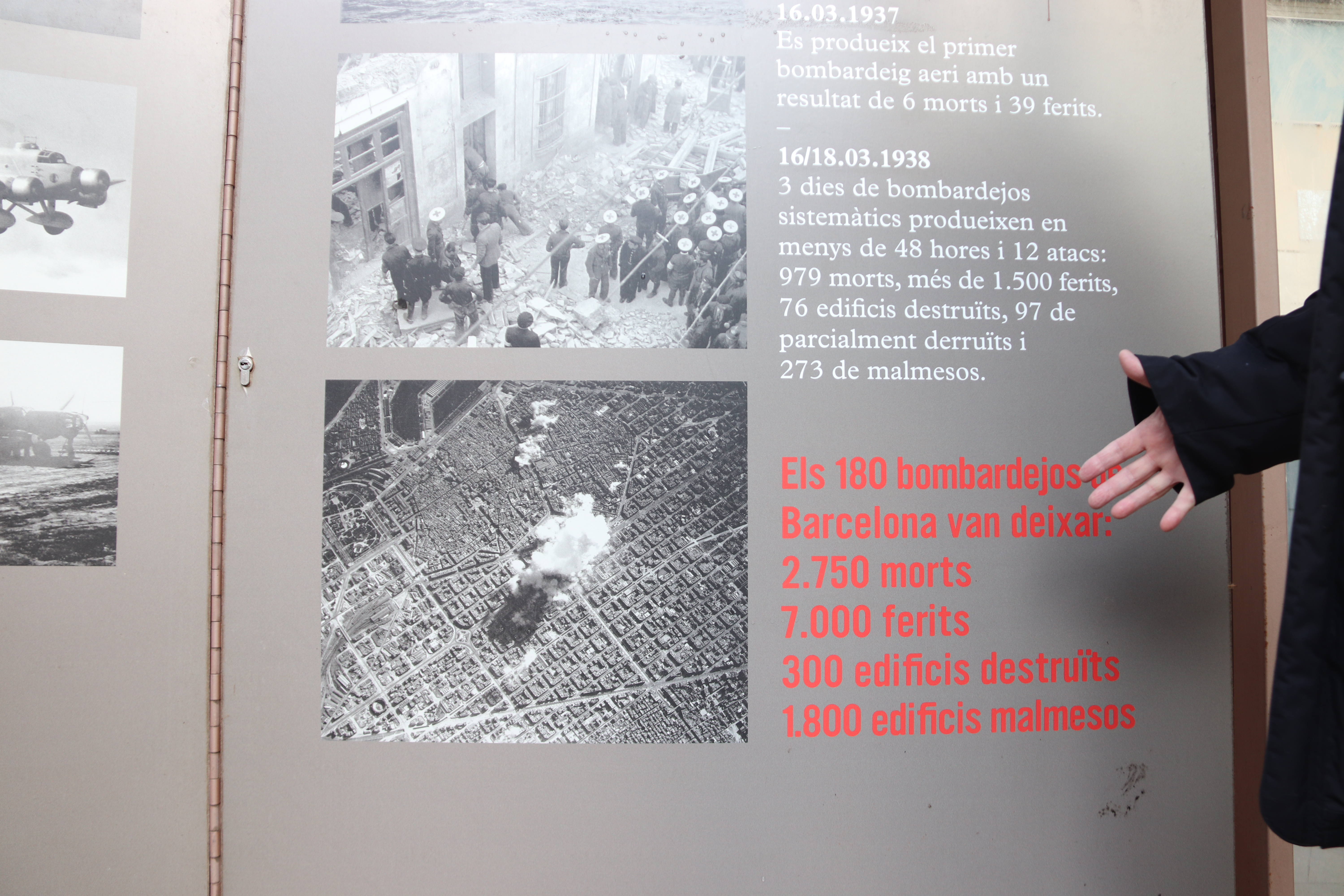Barcelona’s civil war bomb shelters
Underground bunkers likely saved thousands of lives when the city was the first in the world to become systematically bombed

During the Civil War between 1936 and 1939, Barcelona became the first city in the world to be systematically bombed by air raids for a continuous period of time.
German nazi and Italian fascist aircraft, in preparation for World War 2 and in aid of their ally Franco, carried out nearly 200 blitzes on the Catalan capital.
“There was a lot of hunger, a lot of sadness, a lot of worries. Consider too that there were a lot of people on the front lines of the war,” historian Josep Contel explains to Catalan News.

The people of Barcelona had various methods of defending themselves during the war efforts that can be categorized as active defence and passive defence.
Active defence involved things like guns and cannons shooting at enemy planes arriving to bomb the city, as well as sirens that alerted the locals of an incoming air raid.
When an incoming blitz was spotted coming, sirens would alarm throughout the city, and as many people as possible scurried into the underground shelters to wait out the bombing. This resistance strategy was a part of the passive war defence, which also included information campaigns, medical services, fire brigades, and teams of neighbours getting together to tidy up the rubble left after a raid, or even help anybody caught up in the bombing.

The bomb shelters beneath the surface were some of the most instrumental tools the locals had to defend themselves with. Across Barcelona, there were some 1,400 of these underground bunkers. Around 2,500-3,000 people perished in the air raids, but this number would have undoubtedly been higher if not for the success of the bunkers known as ‘refugis antiaeris’ in Catalan.
However, in many cases, “people found out an air raid was happening when they felt the bombs dropping before they heard the sirens alarming because sometimes they would happen at the same time,” as Contel says.
The first air raid over Barcelona came on March 16, 1937. Six people lost their lives and a further 39 were injured that day. Exactly one year later, the most deadly episode of bombing bega, which would last three days. Over twelve separate attacks, 979 people were killed, more than 1,500 were injured, 76 buildings were completely destroyed and another 97 were partially destroyed.

In 2019, the Barcelona city council published an interactive map of all of the civil war refugis discovered in the Catalan capital, where you can also see where the most-bombed parts of the city were. In general, the fascist forces aimed for the center of the city and the port areas the most, the areas where most people lived in the city, and that were very important logistically.
Following the war, many of the bomb shelters were forgotten for decades and many have only been rediscovered in more recent times. Josep Contel manages the Refugi Antiaeri 232 in Plaça del Diamant in the neighbourhood of Gràcia, and explained the history of the bunker to Catalan News on the benches 12 metres below the ground in the shelter itself.

Refugi Antiaeri 232 is made up of a series of long, tight corridors, with benches built into either side and an area designated for medical treatment.

This one, like all shelters, had to be built with at least two entrance and exit points in the event that one was rendered unusable after the bombardment. As well, the stairways into the ground had to take two 90 degree turns, which would at least partially stop rubble potentially falling down towards the people.


The systematic nature of the air raids was also designed to have a traumatic psychological effect on the population, and it was impossible to tell how long the attacks would last.


As Contel puts it, “you couldn't know what routes the planes were going to take, you couldn't know if they would go over the sea and then return. Until you knew for sure that the planes went toward Mallorca, the siren didn't alarm again to signify the end of the raid.”
Despite this, many news reports from the time of the war noted how the locals kept their spirits up throughout this period, perhaps calmed by the security provided by these shelters.
Following the return to democracy, many historic shelters were destroyed to build car parks, but some across the city were saved for historical memory, and have been open for visits in recent years, such as the one at Plaça del Diamant, as well as Refugi 307 in Poble Sec, managed by Barcelona’s History Museum (MUHBA).